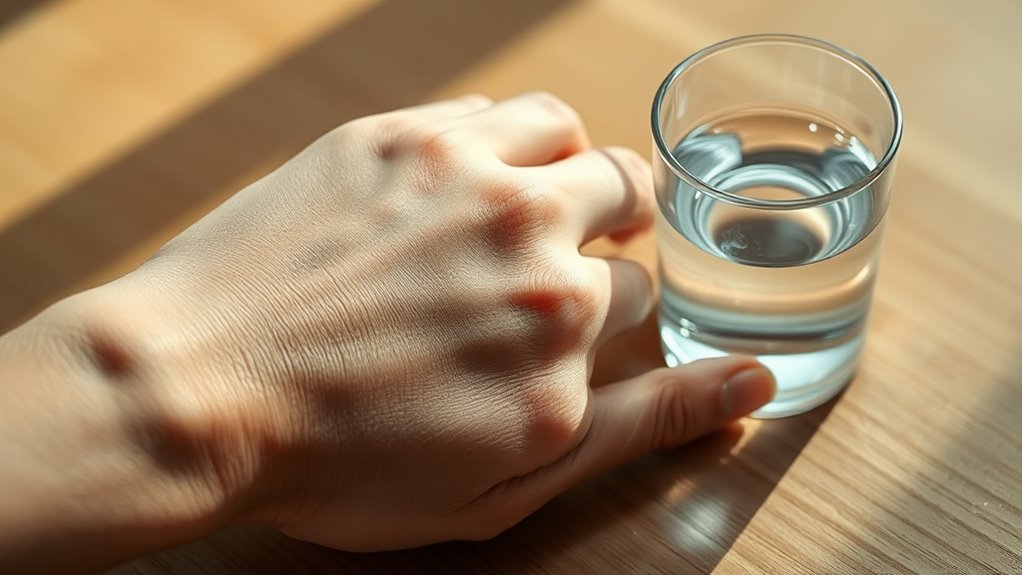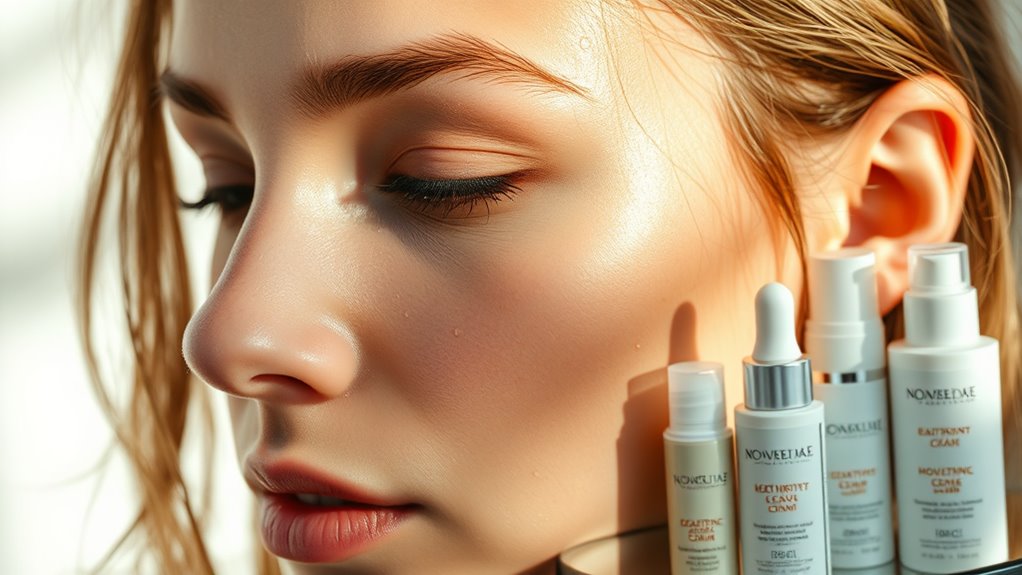How I Control Oily Skin Without Over-Drying
You’ll control your oily skin without over-drying by starting with gentle cleansing methods like double cleansing to remove excess sebum effectively. Choose non-comedogenic products with hyaluronic acid to boost hydration without clogging pores, and apply lightweight moisturizers twice daily. Adjust your diet by reducing refined sugars and adding omega-3 sources, while exfoliating gently twice weekly. These strategies balance oil production and skin health, paving the way for deeper insights on maintaining that perfect equilibrium.
Understanding Oily Skin Causes
Oily skin happens when your sebaceous glands overproduce sebum, a natural oil that protects and lubricates your skin. This excess results from hormonal fluctuations, genetics, diet, and environmental factors like humidity. You experience it more during puberty when androgens surge. Understanding these triggers enhances your oil control approach, helping manage overproduction without unnecessary complications. Additionally, having oily skin can provide benefits such as natural moisture retention, which helps keep the skin hydrated and youthful.
Effective Cleansing Methods
Effective cleansing is essential for managing oily skin, as it removes excess sebum and impurities without disrupting your skin’s natural balance. You’ll achieve this by selecting gentle techniques that target oil buildup without irritation. Here’s a practical guide:
| Cleansing Method | Key Benefits | Practical Steps |
|---|---|---|
| Gentle Foaming | Reduces sebum effectively | Lather and rinse twice daily |
| Oil-Based | Dissolves impurities | Massage then wipe off |
| Enzyme-Based | Exfoliates without drying | Apply for 1 minute |
| Micellar | Quick, non-stripping clean | Use cotton pad to swipe |
| Double Cleansing | Deep cleans without residue | First oil, then water-based |
Incorporating effective oil control products can further enhance your cleansing routine and help maintain a shine-free complexion.
Selecting Non-Drying Products
When selecting products for your oily skin, you’ll want options that maintain hydration without stripping essential moisture or promoting excess oil.
Focus on non-comedogenic formulas with ingredients like hyaluronic acid, which draws moisture without clogging pores. Additionally, incorporating hyaluronic acid benefits can help keep your skin plump and hydrated without adding to oiliness.
Avoid harsh sulfates and alcohols that disrupt the skin barrier.
Opt for pH-balanced, dermatologist-tested items to minimize irritation and support long-term balance.
Hydration Strategies for Balance
Proper hydration strategies are essential for maintaining balance in oily skin, as they help regulate sebum production without overwhelming pores. You select lightweight, non-comedogenic moisturizers with hyaluronic acid to draw in moisture without greasing. Apply them twice daily on damp skin to lock in hydration, preventing overcompensation from oil glands. Always patch test new products for sensitivity, ensuring scientific efficacy and practical results. Additionally, incorporating natural methods can further enhance your routine for achieving optimal skin balance.
Daily Lifestyle Adjustments
You’ll manage oily skin better by incorporating key daily lifestyle adjustments into your routine.
Begin with dietary changes, such as reducing processed foods and increasing omega-3 rich options to regulate sebum production. It’s also beneficial to be mindful of foods that trigger acne, as certain items can exacerbate breakouts.
Next, refine your hydration routines by drinking ample water and using targeted products to keep your skin balanced.
Dietary Changes
What if simple tweaks to your diet could reduce oily skin?
Evidence-based changes influence sebum production by managing hormones and inflammation.
- Cut refined sugars to stabilize blood sugar and minimize oil triggers.
- Add omega-3 sources like salmon to combat skin inflammation effectively.
- Increase antioxidant-rich veggies to protect against oxidative stress.
- Limit dairy products, as they may spike oiliness in sensitive skin.
- Incorporate zinc from nuts to regulate sebum and promote balance.
Hydration Routines
Maintaining adequate hydration levels is essential for balancing oily skin through simple daily routines.
You must drink at least eight glasses of water daily to support internal moisture and regulate oil production.
Incorporate hyaluronic acid serums into your skincare regimen for external hydration.
Avoid dehydrating factors like caffeine and alcohol, as they’re scientifically linked to excess oil.
Track your skin’s response and tweak habits precisely for ideal balance.
Long-Term Maintenance Tips
Consistently adopting these strategies secures lasting control of oily skin.
You’ll maintain balance by integrating science-backed habits into your routine, preventing overproduction without dehydration.
- Exfoliate gently twice weekly to clear pores and regulate sebum.
- Choose non-comedogenic products to hydrate effectively without clogging.
- Drink ample water daily to support internal oil balance.
- Eat antioxidant-rich foods like berries to bolster skin barrier.
- Monitor and tweak your regimen monthly based on skin feedback.





